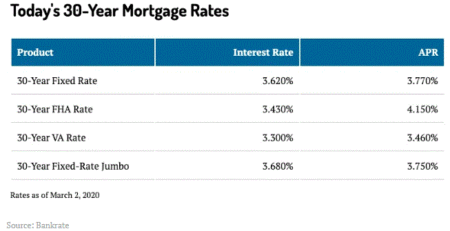What Is a Self-Directed IRA?
What Is a Self-Directed IRA?
If you’d like to expand your retirement portfolio to include real estate, cryptocurrencies, commodities or other non-traditional assets, then a self-directed IRA could be an option for you.
A self directed IRA is an individual retirement account that allows the holder to invest in alternative asset classes. These include things like real estate, cryptocurrency, limited partnerships, commodities, precious metals, and many others allowed by the IRS.
How is it different from traditional IRA accounts?
The main difference between traditional and self-directed IRAs are the asset types you can own within them and the custodian’s role in the account.
You still have the tax-deferred advantages inherent to traditional IRAs.
The annual contribution limits and required minimum distributions of a traditional IRA are the same in a self-directed account.
Be sure to conduct a proper due-diligence with potential custodians to make sure they align with your goals. Understand their transaction fees and any future fees as your asset values grow.
What are the rules and regulations?
There are certain rules and regulations you need to abide by since self-directed IRAs allow you to invest in alternative asset classes.
Prohibited transactions and disqualified persons
You or any disqualified person needs to be aware of the prohibited transactions set forth by the IRS.
In your self-directed IRA, the IRS doesn’t allow you to transact with disqualified people. These include family members such as your spouse, parents, grandparents, children, grandchildren, etc.
The IRS prohibits the following transactions within the account:
- Living in your investment property
- Renting out a property you own to a disqualified person
- Selling or exchanging property in your IRA to a disqualified person
- Working on or maintaining the property the IRA yourself; it must be done with a contractor
Failure to follow these regulations will void your self-directed IRA and cause a taxable event. This can bring hefty penalties if you are under 59 ½. Be sure to discuss these activities with your custodian.
Investing through a self-directed IRA
With a self-directed IRA, you expand your investment options. You’re responsible for any due diligence and finding the assets you want to invest in.
However, it’s important to understand what your investment goal is so you can determine what type of account to open.
There are three options for opening a self-directed IRA: financial institution self-directed IRA, custodian controlled IRA, and checkbook control self-directed IRA.
Financial Institution self-directed IRA
The most widely known form of a self-directed IRA is one that’s held through a financial institution, such as Charles Schwab, TD Ameritrade, Fidelity, etc.
This is the most limiting option. You can only choose investments that the institution makes available to you, such as stocks, bonds, and mutual funds.
If you want the option to invest in alternative asset classes like real estate, this is not the option.
Custodian controlled IRA
You can open an IRA with a custodian to gain the flexibility of investing in various assets including alternative investments.
The custodian of your account is only responsible for financial reporting and dispersing your funds. They’re not required to give you financial advice, unlike a traditional IRA custodian.
One potential drawback to transacting through a custodian controlled IRA is that you cannot immediately access your funds and may have to pay fees when doing so.
For example, let’s say your goal is to purchase real estate with your IRA. If it’s owned by the custodian, then you’ll have to give them paperwork before they approve the transaction. This may be a long and fee-involved process. You could miss out on the deal to someone who acts quicker.
Checkbook control through a self-directed IRA LLC
To be truly self-directed, “checkbook control” is what you’re looking for. This gives you full control over your investments and allows you to transact whenever you please.
You’ll have the ability to write a check or wire money to and from your account. You’ll also save on custodian fees since you’ll be dispersing the funds.
This type of account is known as a self-directed IRA LLC. What you’re creating is an LLC that your self-directed IRA is held in and makes you the owner of the account, just like a bank checking account.
Since you’re investing through an LLC, you have the protection that comes along with owning an LLC.
Purchasing real estate through a self-directed IRA
The first step to investing in real estate through your self-directed IRA is to open up an account with a custodian. A knowledgeable custodian will help you navigate through the IRS tax laws.
When looking for potential properties to invest in, make sure the cash flow will cover all maintenance and repair costs. You don’t want to be in a situation where you have to add funds into your account.
If you’re more of an active investor, know that you can buy, sell, and flip properties within your IRA. You’ll still enjoy the benefits of tax-deferrals that come with owning real estate.
How to open up a self-directed IRA account
Traditional IRAs are held with familiar custodial companies, like Fidelity or Charles Schwab for example. Self-directed IRAs are held with a custodian as well, but this would be a custodian that allows to invest outside of Wall Street.
Many traditional banks and financial institutions do not allow self-directed IRAs. But, there are many reputable custodians available to investors. Quick research will show the growing number of custodians available to you.
Once you’ve found a custodian that meets your criteria, contact them to open a self-directed account.
You can fund your self-directed account by rolling over funds from an IRA you currently have or depositing new money into the account.
You are in control
If you want to diversify your retirement portfolio to assets outside of stocks, bonds, and mutual funds, then a self-directed IRA may be an option for you. Make sure to understand the prohibited transactions to avoid taxable events. Speak with the custodian company if you have questions. If you’re ready to start investing on your own terms, you may be ready to open a self-directed IRA.
Note, this article is written in collaboration with Kyle McGrath.
Have you thought about passively building your wealth via real estate investing?
Let’s talk











